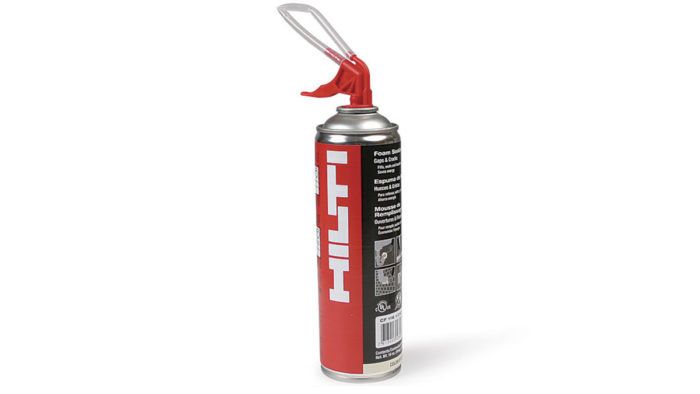How To Seal Criling Registers
Utilize Spray Cream to Stop Register Grilles From Sweating
Our resident energy nerd suggests that a lack of air-sealing and insulation may be the cause of condensation around air ducts in a cathedral ceiling.

I take a customer here in Maryland who is complaining nearly wet air grilles during air-workout season. The grilles get rusty, and there may be mold. It appears limited to the master bathroom on the upper floor, where the vents are in the cathedral ceiling. The air handler for these vents is located in an attic space higher up the adjacent hallway, where the ceiling is flat. The fiberglass-batt insulation in this cranium space is under the roof, non on the ceiling beneath. The air ducts, which are insulated as well, appear to run between the insulation and the roof sheathing. The client had an HVAC contractor take a await at it, and he said that the duct insulation looks skillful. I have two questions. Beginning, is the duct location causing the problem? 2nd, is in that location a reasonably like shooting fish in a barrel fix, since relocating the ducts would be an expensive suggestion given the cathedral ceilings?
—DAVID, via e-mail
Martin Holladay, editor of Green Edifice Counselor, responds: In gild to get this type of condensation, you need two elements: humid air and a common cold surface. To eliminate the condensation, you lot need to cover the cold surfaces with vapor-impermeable insulation or seal up the leaks that allow the humid outside air to come into contact with the cold surfaces.
It's certainly true that the ducts in this house aren't located properly. Ducts should never be installed in a cathedral ceiling. The best solution is to relocate the forced-air register and the duct serving the register— for example, past building an airtight interior soffit to hide the ductwork.
My guess is that the rafter bay where this duct is located is leaky, assuasive hot, humid outside air to come into contact with the common cold register. As a start step, assuming that the annals boot is uninsulated, you could try insulating the metal register boot with canned spray foam. If this isn't sufficient, it'south time to open up upwards the ceiling so that yous can either seal the cracks that allow exterior air to achieve the register boot, or move the duct to a better location.
This article appeared in Fine Homebuilding Magazine issue 281 titled "Sweaty Register Grilles"
More virtually condensation:
- Dealing with fogged windows
- Bath-fan condensation
- Air Leaks: How They Rot Houses and Waste Energy
Source: https://www.finehomebuilding.com/2019/01/11/use-spray-foam-to-stop-register-grilles-from-sweating
Posted by: chiltonowayll.blogspot.com


0 Response to "How To Seal Criling Registers"
Post a Comment